How to Win the Holiday Crowd: 8 Strategy Moves for Merchants

Holiday shopping might be shifting in 2025, but that doesn’t mean consumers are less excited about finding the perfect gift. What might change? Shoppers tightening their budgets, rethinking how and when they shop, and taking more time to plan ahead.
To get a clearer picture of what to expect, Discover® Network surveyed 2,200 consumers about their 2025 holiday shopping plans. This annual holiday shopping survey reveals how these shoppers intend to budget, browse, and buy—offering insights that may help merchants better align with what customers want.
From chasing deals and earning rewards to choosing their preferred payment methods, the responses point to eight strategy moves merchants may want to explore this season.
1. Turn budgeting into buying: Meet shoppers where they’re at
Some shoppers may take on payment plans for credit while shopping for the holidays. The survey revealed that 23% of respondents still had debt in May 2025 from their holiday shopping last year. Budgeting for gift purchases is important to avoid debt, especially for younger consumers who are less likely to have a stable source of income. This year, a majority of the survey respondents (70%) plan to create a holiday shopping budget. With that in mind, merchants may consider appealing to consumers by advertising pricing and bundling merchandise in a way that makes sense for the budget-conscious shopper. This may include offering special promotions throughout the holiday shopping season.
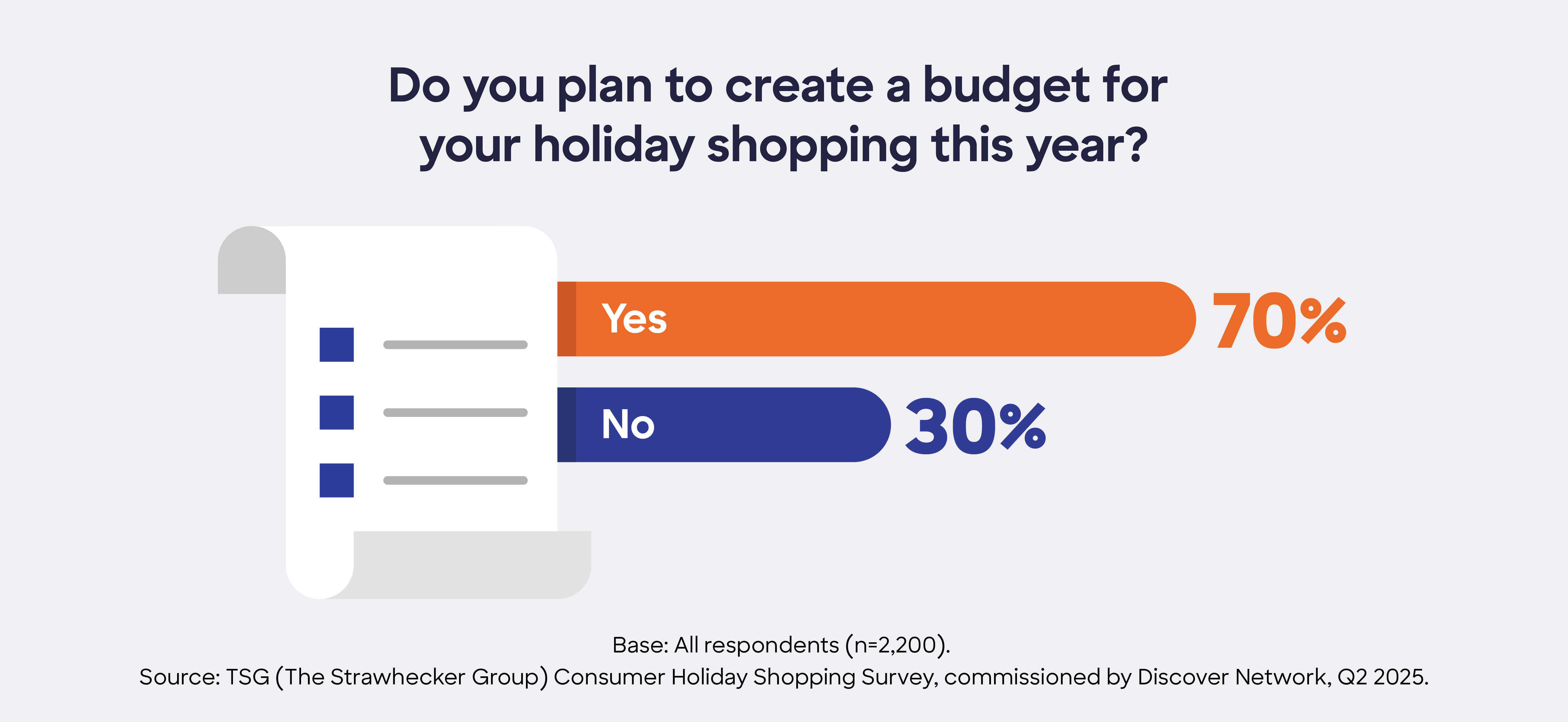
2. Expect smaller carts, smarter choices
Economic uncertainty is shaping how people plan to shop this holiday season. Global growth is predicted to slow from 3.3% in 2024 to 2.9% in 2025 and into 2026.1 In regions like North America and Asia1, weaker economic outlooks may be influencing how and how much shoppers spend. Some are already scaling back: 34% of survey respondents reported that they may reduce expenses by buying fewer gifts this year. Expectations also vary by region. While 34% of Asian respondents plan to spend more on gifts than last year, only 19% of European and 17% of North American respondents said the same. The majority of Europeans (61%) and North Americans (56%) plan to spend about the same as last year.
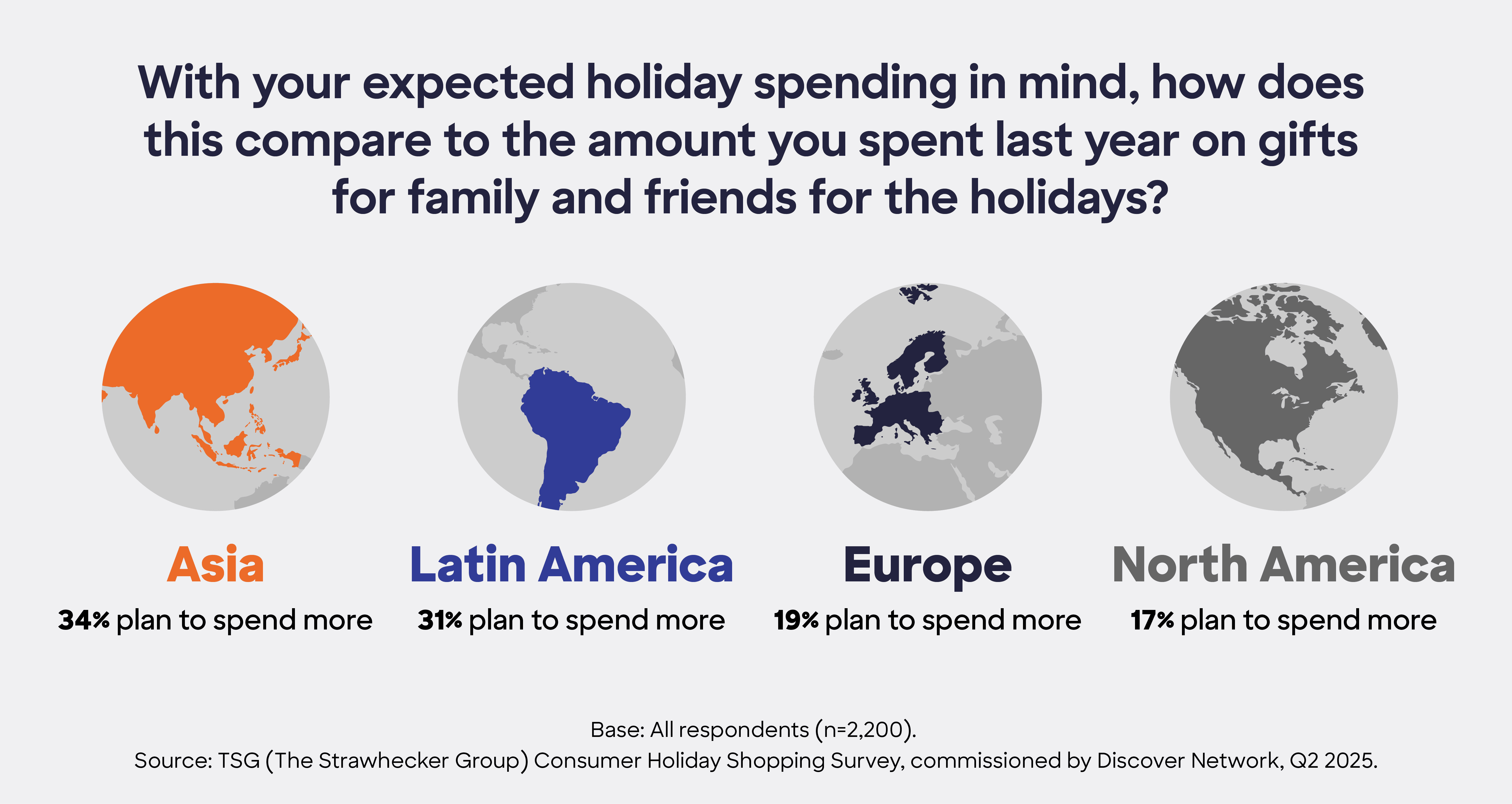
3. Get ready for an early start to holiday shopping
Shoppers plan to start buying gifts earlier this year, spreading out purchases over a longer period of time in order to save money and take advantage of deals and promotions that may help stretch their holiday budgets. Nearly three-quarters (74%) of respondents indicated that they are at least somewhat likely to begin their holiday shopping earlier this year, while 61% said they’d start buying gifts before the end of October.
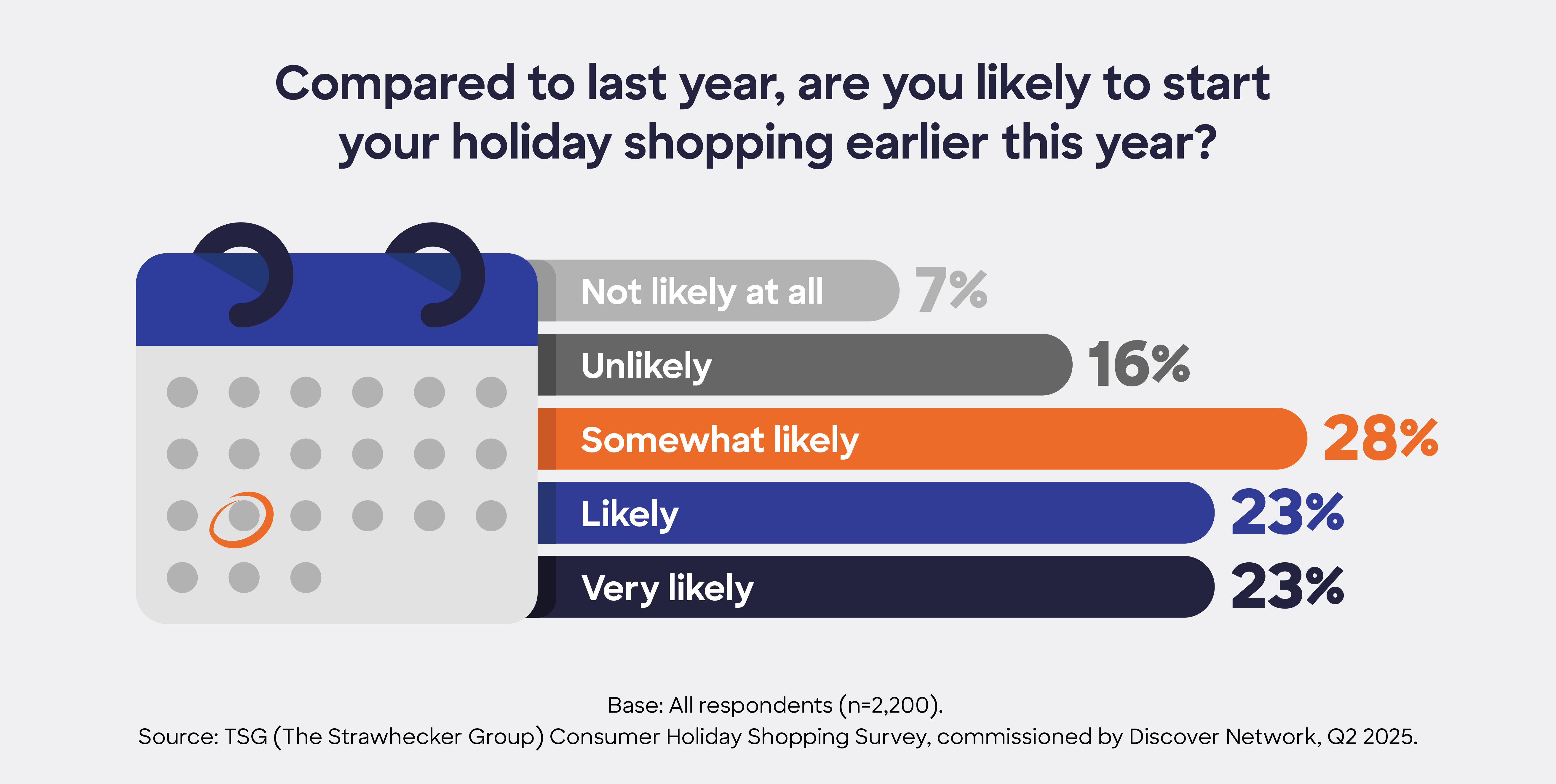
However, mid- to late fall (October to early December) is also a popular time to get started on the bulk of holiday shopping. In fact, 78% of survey respondents plan to do most of their holiday shopping during this time. Though some may begin shopping earlier, 27% of survey respondents say they’ll start in November—timing that suggests they may be planning to take advantage of Black Friday and Cyber Monday deals.

4. Be channel agnostic
Merchants may want to consider creating a positive buying experience both online and in store. Consumers are used to switching between shopping channels in order to find the products they want throughout the year. While 61% of survey respondents reported shopping online frequently or very frequently, 64% also reported shopping in-store frequently or very frequently. When purchasing holiday gifts, consumers are likely to continue using multiple channels. In fact, most respondents (56%) plan to do an even mix of online and in-store shopping in order to find the best products and deals.
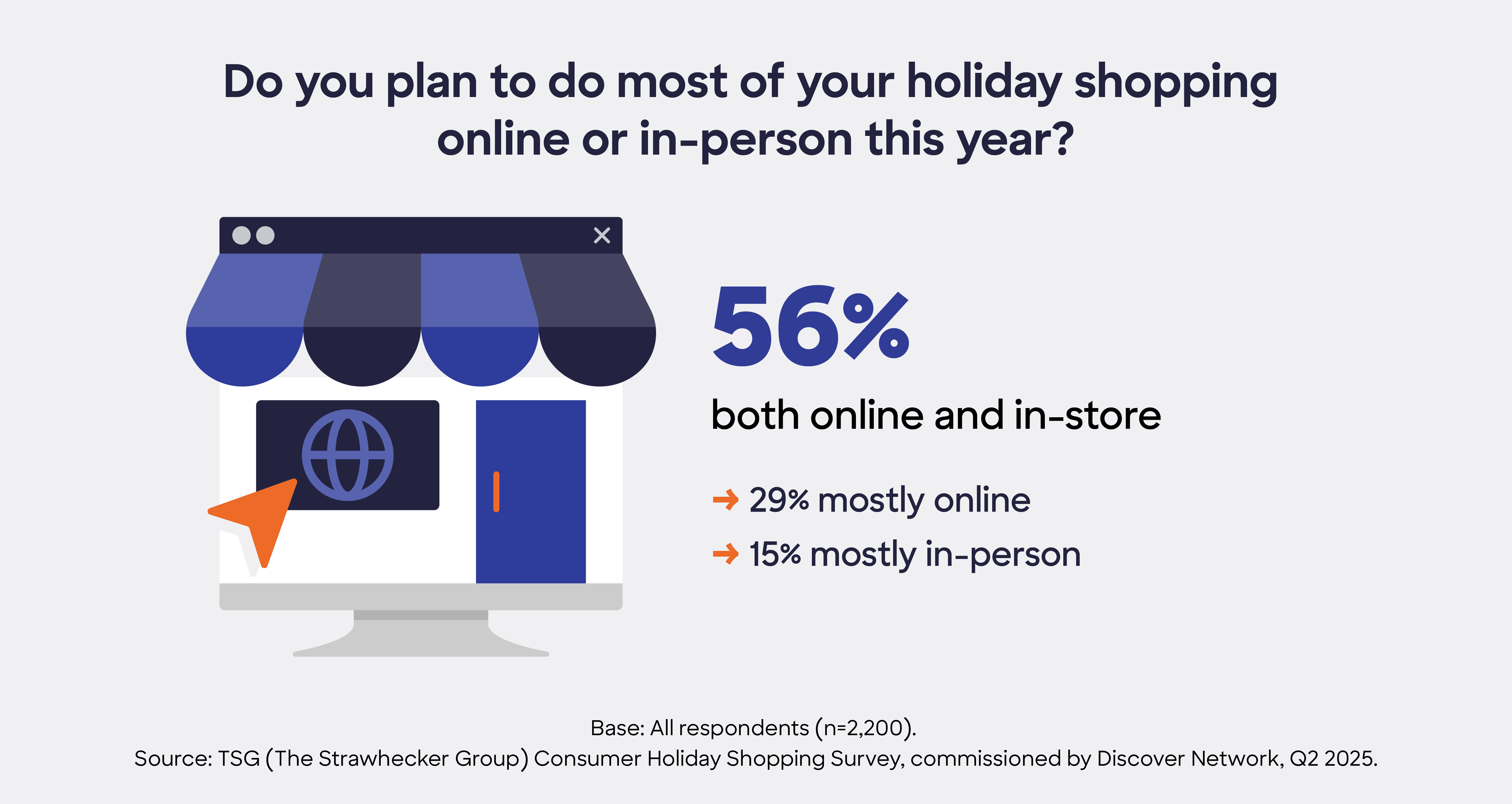
What did respondents say is the worst part of holiday shopping? Crowds and lines were mentioned by 22% of survey respondents as their least favorite aspect of shopping for the holidays.
The busyness of the season draws huge crowds as shoppers flock to find deals and complete their shopping list on time. When asked about their favorite aspect of holiday shopping, 45% of survey respondents mentioned the joy of gift giving. This indicates many consumers will brave the swarm of people, wait in lines/queues, weave through traffic, and overcome parking obstacles to get the best deals that help keep themselves on budget—because in the end, the effort and hassle is worth the joy of seeing smiles on their loved ones’ faces when their gifts are revealed.
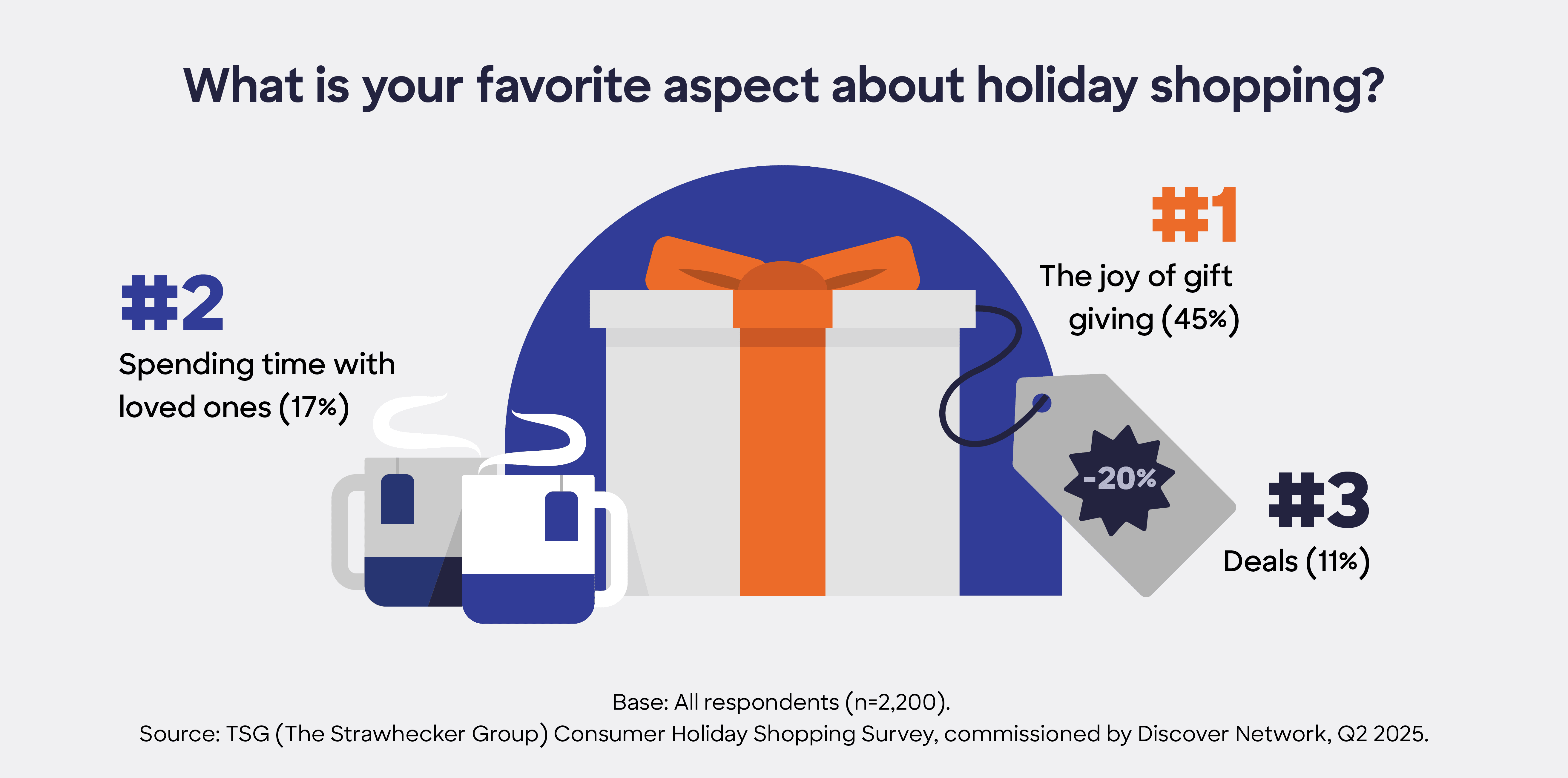
5. Offer discounted shipping
Online marketplaces are becoming more popular than large retailers for holiday shoppers to find unique gifts at reasonable prices. While 69% of survey respondents plan to shop online at large retailers, 84% plan to shop online at marketplaces. When shopping online, shipping is an important component. The survey found that free shipping is more important than fast shipping, with a majority of respondents (78%) choosing standard as their preferred method (over expedited delivery, same-day delivery, or pick-up). Same-day shipping was very or extremely important to 29% of respondents, while free shipping was very or extremely important to 69% of respondents when making purchases for the holiday season. With tight budgets, many respondents prefer to save on shipping costs, so they are likely to plan ahead to ensure their gifts arrive on time.
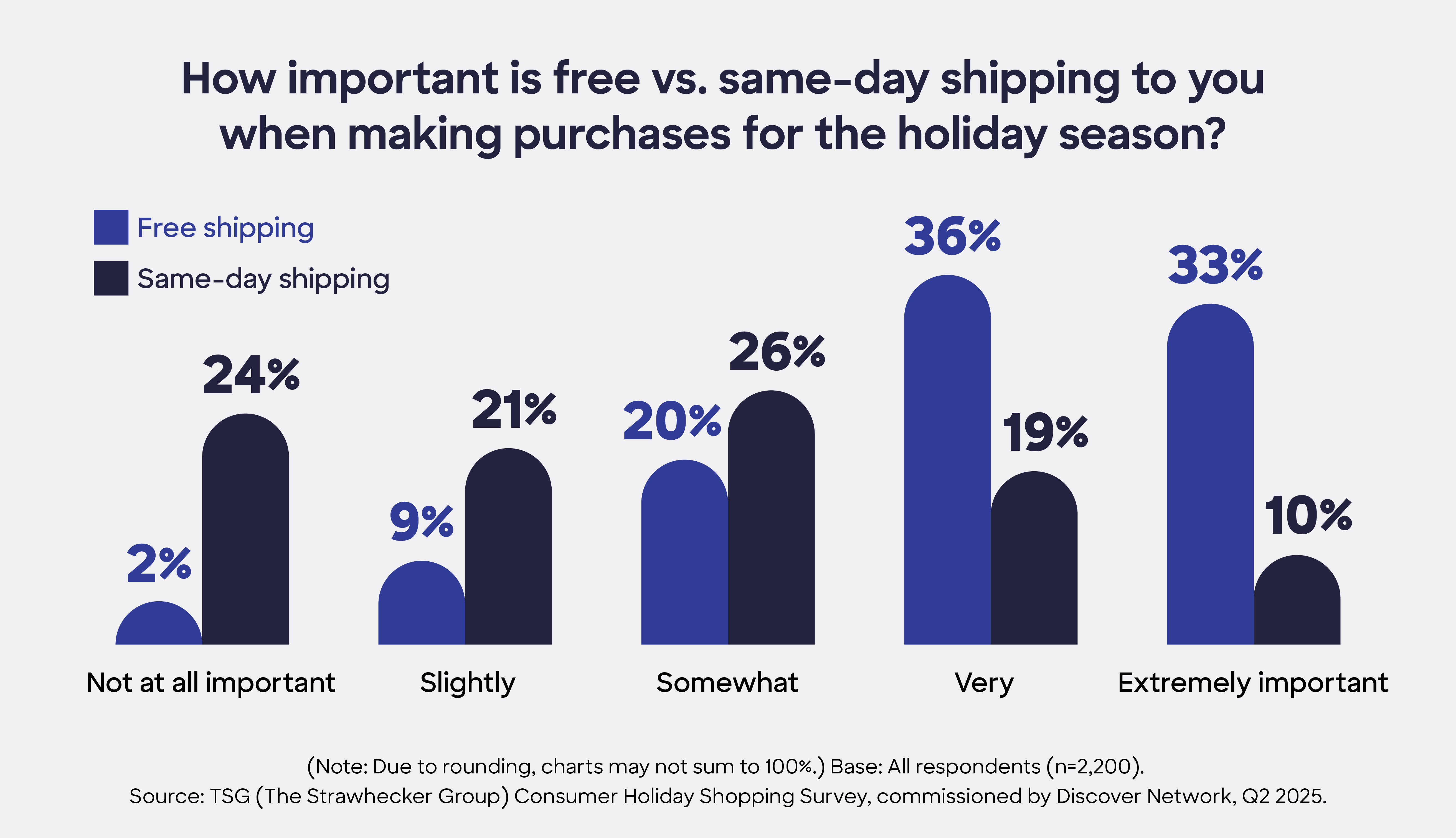
6. Use social media to inspire
An emerging shopping channel, social media provides online gift-giving inspiration to a subset of shoppers this holiday season. Globally, 67% of survey respondents are at least “a little” influenced by social media when holiday shopping. More than a third of respondents (36%) plan on shopping on social media sites. While social media shopping has not yet risen to the popularity of other online channels, there is an opportunity for online sellers to influence shoppers’ purchasing behavior for the holiday season.
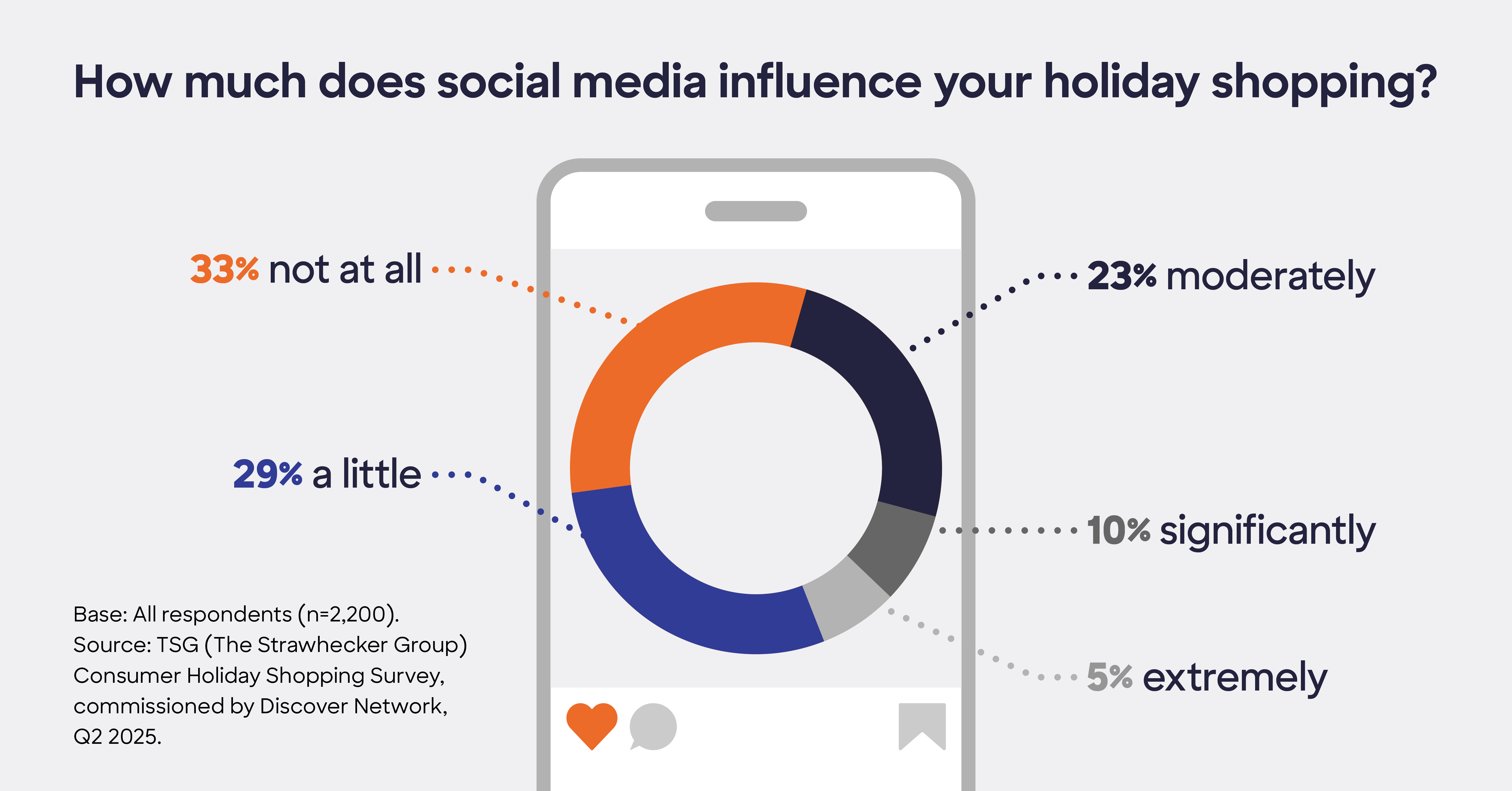
7. Understand the importance of rewards and promotions
Shoppers might be heavily influenced by promotions when buying gifts for the holidays. Sales, deals, and promotions will be important to draw shoppers into making their purchases, as 44% of respondents indicated they frequently or always wait for discounts before purchasing a holiday gift. Cash back rewards may be particularly enticing for shoppers. Respondents reported that 76% are at least a little influenced by cash back offers on cards or person-to-person apps while shopping for the holidays. Meanwhile, 35% of survey respondents reported that they always take advantage of “cash back” rewards. Reviewing their rewards and offers may be the first place shoppers start when putting together their gift lists.
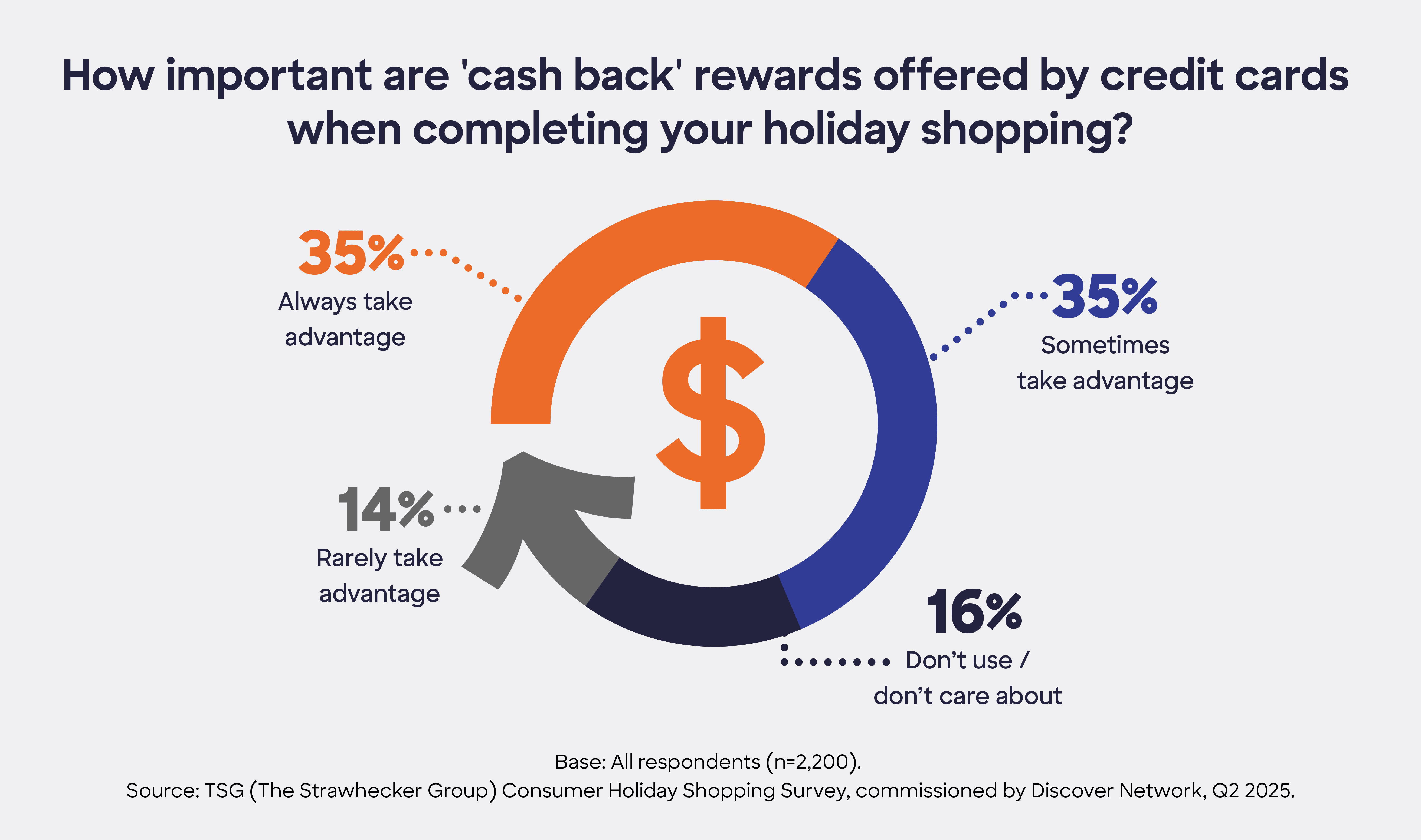
8. Support consumers’ preferred payment methods
Payment acceptance is vital for the holiday shopping season, yet 47% of respondents have been in a situation in the past year in which their preferred payment method was not accepted. In fact, 33% of survey respondents said they wouldn’t shop at a store that didn’t accept their preferred credit card, and 34% would be unhappy about it. Respondents find it frustrating when their preferred payment methods are unavailable. 62% of respondents considered it at least moderately upsetting when unable to purchase holiday gifts with their preferred payment method. Some may only choose to shop where they can use their top choice of card.
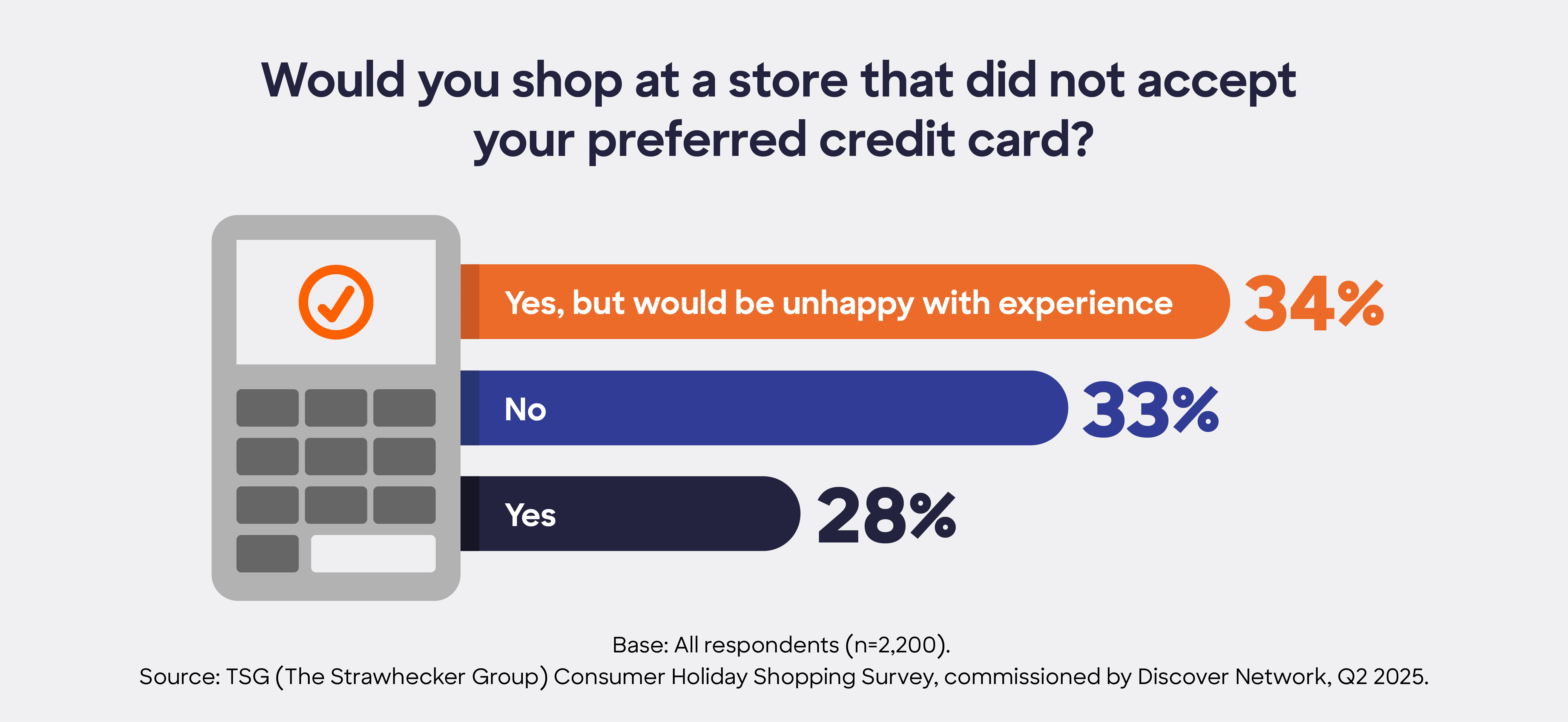
The payment method consumers are likely to prefer when buying gifts is a card, with 54% of respondents planning to pay for holiday purchases with a credit card and 29% planning to pay with a debit card. Card payments are also likely to continue to be more popular than cash and digital wallet payments when shopping for the holidays this season, so it’s important merchants can accept and technically support card payments to ensure a smooth purchasing experience.
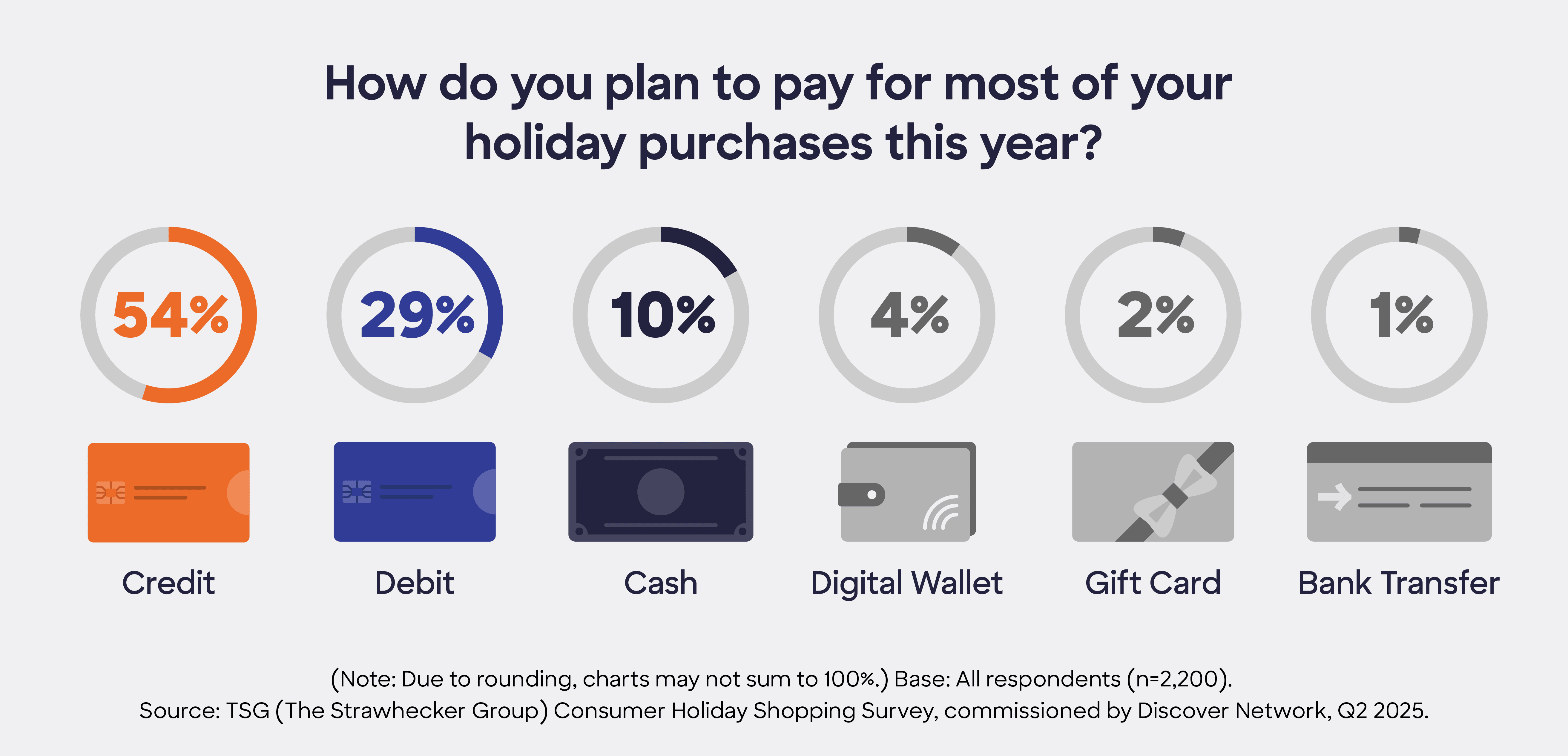
Draw shoppers’ attention with deals and inspiration, secure the sale with payment acceptance
While many consumers already have their favorite places to shop during the holiday season, merchants have an opportunity to use social media along with promotions to draw shoppers out of familiarity and into the unknown—to find new products, sites, and stores. To win holiday shoppers, merchants must meet them with seamless checkout experiences, wherever and however they shop.
Find out how accepting Discover Network can help merchants grow strong payments strategies that encourage sales during the holidays and all year.
- TSG (The Strawhecker Group) Consumer Holiday Shopping Survey, commissioned by Discover Network, Q2 2025.
- OECD. (2025). Tackling Uncertainty, Reviving Growth. OECD Economic Outlook, Volume 2025 Issue 1.
The information provided herein is sponsored by Diners Club International® and Discover® Network. It is intended for informational purposes and is not intended as a substitute for professional advice.